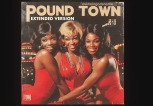10 Ways Tattoos Are Being Used As A Form Of Therapy
Mental Illness
Some people living with mental illness like bipolar disorder or depression get tattoos for motivation – to remind themselves to take each day as it comes. Or, they get a tattoo to claim ownership over their illness.









